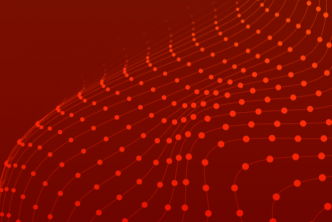Transitioning a Pharmacovigilance System from Clinical Development Towards Commercialization: 3 Key Questions
Pharmacovigilance is essential to any product’s lifecycle and every company must establish a compliant pharmacovigilance system to keep patients safe.
For asset development teams considering an initial launch in the United States, European Union (EU) or any other region, building a post-marketing pharmacovigilance (PV) system can be a daunting task. Safety of patients and public health must always be a priority, because if built incorrectly, may significantly impact individuals’ health as well as company reputation and have legal ramifications.
Safety and PV is an integral part of the whole asset’s lifecycle -- from the first patients enrolled into clinical trials until the last packages sold after decades of commercialization. A company is obliged to establish and maintain a compliant PV system. Building a PV system requires significant effort and time. As such, complexity of mandatory safety and PV tasks dramatically increases towards license application and commercialization.
In the first blog in this series, our experts introduce three key questions biopharmaceutical teams must consider for developing a fit for purpose, compliant PV system when transitioning from clinical development to commercialization.
What are the PV requirements to meet?
The first step is to know and understand legislation and PV requirements in force. The current complex regulatory landscape has been evolving for decades, with an intention to protect individuals and public health. There are three levels of PV requirements which must be always considered:
- International standards
- Regional legislation
- Country-level requirements (which are often overlooked and can represent a compliance issue)
The exact requirements should be determined by the countries where the asset will be launched, as well as the asset type and specifications.
When must these PV requirements be met?
Not all the requirements must be met at the same time. The regulatory landscape allows a gradual phased build of a post-marketing PV system towards launch of the first medicinal product worldwide. Key implementation phases are usually determined by three critical milestones:
- Date of the license application submission
- Date of the license application approval
- Date of the asset launch
How should these PV requirements be implemented?
The processes and capabilities must firstly be defined, then set-up and implemented. Successful implementation requires the right mixture of personnel, systems and technologies, processes, and structures. To build in-house capabilities or outsource is always a critical decision. Building a full-in house PV System can be a challenging undertaking. Most PV operations can be outsourced to a qualified vendor; however, accountabilities, company strategy and essential decision-making on the product safety profile and should, where possible, stay in-house.
Compliant PV System Build Requires Careful Planning
A switch of the PV system from clinical trial to a post-marketing setting needs to be planned and aligned with the company vision, strategy, and the rollout plan. Thorough planning of the PV system’s enhancement to a more current and anticipated operating model can reduce cost and increase efficiency. Scaling-up and synchronizing a PV system build and deployment to relevant factors not only allows adequate prioritization of your deliverables and use of resources but also allows you to adjust your PV strategy, including:
- Developing your PV system in a phased implementation focusing on mandatory requirements at key milestones (preparation phase, peri-approval phase, post approval phase or after launch).
- Adjusting your PV system and governance based on your current and anticipated outsourcing and partnership model
Syneos Health has made patient safety a critical component in the acceleration of biopharmaceutical therapies. If you want to understand how we work to keep patients safe throughout the lifecycle of a product with both standalone and integrated services, get in touch with our safety and pharmacovigilance teams.
Contributors
Miroslava Matikova
EU Qualified Person for Pharmacovigilance, Syneos Health
[email protected]
Fanny Provost
Principal Qualified Person for Pharmacovigilance Office Specialist, Syneos Health
[email protected]
Zeshan Iqbal
Director Safety & Pharmacovigilance, Syneos Health
[email protected]





